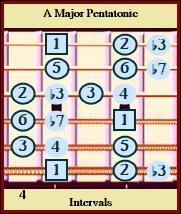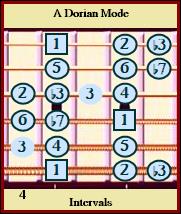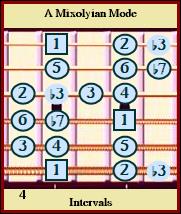Minor and Major Pentatonic Scale
Minor and Major Pentatonic Scales On Guitar
Minor and Major Pentatonic Scales On Guitar. The Minor Pentatonic Scale contains the root, flat third, fourth, fifth and flat seventh (1, b3, 4, 5, b7). The major pentatonic scale has the root note, second, third, fifth and sixth (1, 2, 3, 5, 6 ).
The Minor Pentatonic Scale is more commonly used soloing in blues and rock music. To start learning to master soloing using the both Scales. We are going to learn to how to play lead solos with the Major Pentatonic Scale. The root tonal center A Major Pentatonic is a parallel scale mode. The 2nd degree mode of the A Minor Pentatonic Scale is the C Major Pentatonic Scale. With this same scale shape, we move it down 3 frets from the 8th to 5th fret.
If we superimpose both of these scales together, we get 8 notes (1, 2, b3, 3, 4, 5, 6, b7). It’s an A Dorian Scale Mode (1, 2, b3, 4, 5, 6, b7). It’s the 2nd degree of the G Major Scale. Also it’s an A Mixolydian Mode (1, 2, 3, 4, 5, 6, b7) if we move Minor 3 to a Major 3. It’s the 5th Degree of the D Major Scale. The A Dorian Mode resolves best so long as the IV chord of the progression is Major.
Let’s take a common blues chord progression (I, IV, V). If we are playing a song in the key of A Minor Pentatonic. The chords are A, D and E major. The A Minor Pentatonic Scales resolves best and also the A Dorian Mode Scale. When you play the A Major Pentatonic Scale it is less resolved and feels little off. It seems the V chord resolves the best to play over. Most of your V Blues Chords resolve better to the 2 & 6 Intervals of the Major Pentatonic Scale.




